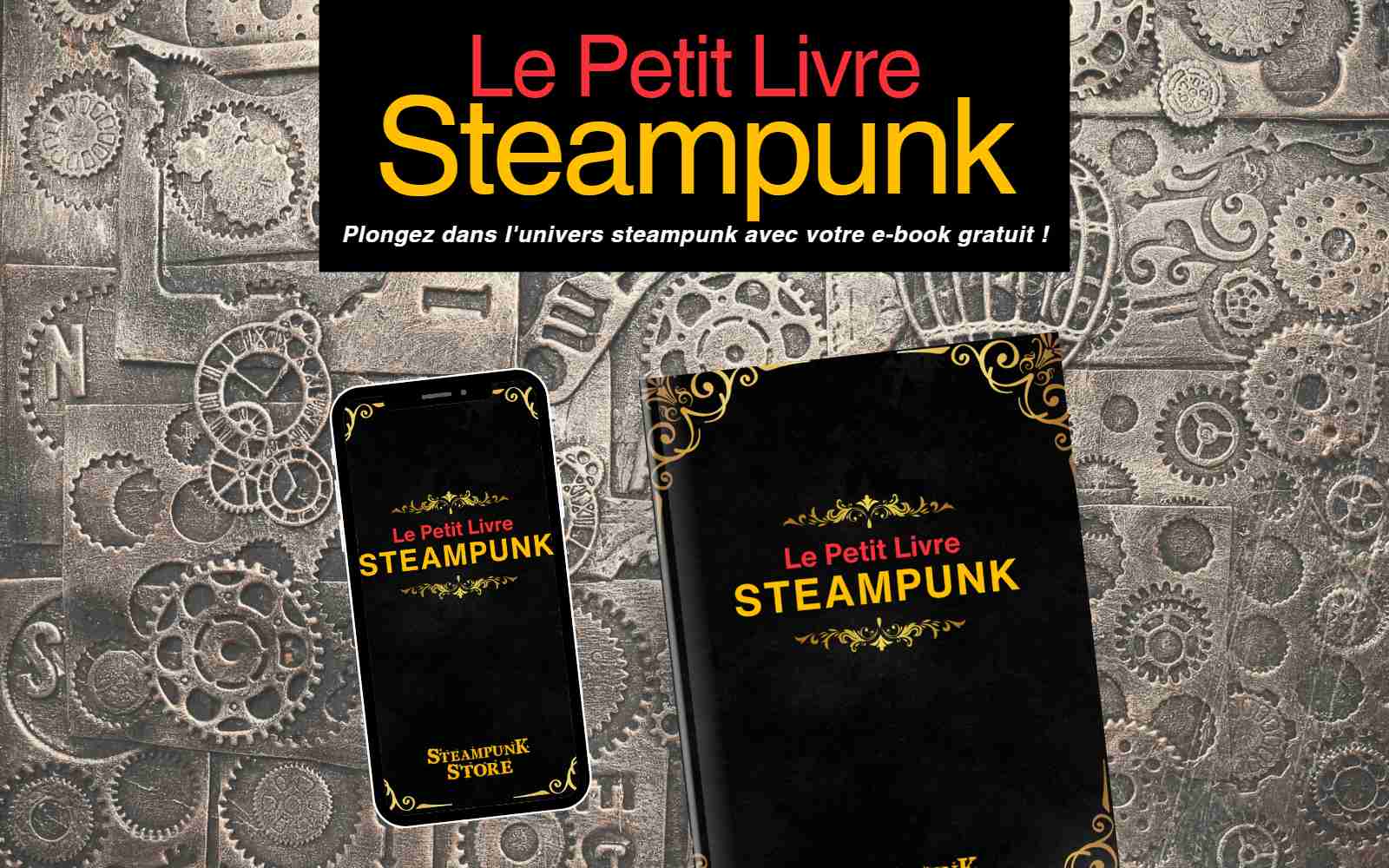
Welcome to Steampunk Style
Steampunk is a design style inspired by the Victorian era's Industrial Revolution. Science fiction author K. W. Jeter coined the term "steampunk" in 1987 to describe a style of fantasy fiction involving Victorian technology, particularly that powered by steam. The style first appeared in mainstream pop culture in the late 2000s and is now used in various design genres such as fashion, literature, film, television, video games, and DIY projects.
The steampunk genre was originally inspired by the works of Jules Verne, Mary Shelley, and H.G. Wells, who were popular science fiction writers in the late 19th century. Today, the steampunk genre emphasizes both the use of ancient technology and futuristic inventions with a retro look that might have been imagined in the 19th century. Steampunk designs often blend digital media with traditional Victorian motifs. For example, a "steampunk"-inspired desktop mouse might feature additional mechanical parts such as brass fittings, gears, manual typewriter keys, or winding keys.
Steampunk clothing and steampunk dresses go through many eras and styles to revisit them:
- The Victorian Era
- The good times
- The Western
- The Gothic
- The Vintage
The Victorian Dress, ancestor of the steampunk dress
Clothing can be a wonderful way to set the scene for a time and place, and it can also say a lot about a character. Thus the steampunk movement favors Victorian England as its base.
Governesses are a good example of the fashion of the time, they were expected to be dressed for all occasions. They tended to wear simple clothing in a limited range of colors (think functional colors like grays, blues, and dark greens) and with little embellishment. She had a few dresses, including her "best" dress , which she wore to church or on special occasions. Otherwise, her clothes were expected to last as long as possible so that the cost was as low as possible.
Most of what we see in museums are beautiful examples of exquisite - and exquisitely expensive - dresses. The most elaborate dresses were not necessarily preserved for history. This means that when you go to museums, you will see much more of the wardrobe of the bourgeoisie than of more modest people. Although her outfit is not as luxurious and avant-garde as that of the woman whose children she raised, the governess had one thing in common with her mistress: they both wore the same silhouette.
The late 1850s were characterized by wide, flared skirts that flowed from a tight waistline. A breakthrough in undergarments allowed women to achieve these immense skirts with the cage crinoline . Up until this time, women gathered their petticoats to create a fullness effect. As impractical as they may seem to us, the wire crinolines covered in cotton actually created a structure that allowed the dress to drape over the body.
Because crinolines were relatively inexpensive, women of all classes eventually adopted them (although the enormous yards of fabric required to make truly immense skirts were a fashion that only the very wealthy could afford). The shape created by crinolines was so popular that in 1863, £200 worth of product was reportedly lost in the Staffordshire potteries due to workers' wide skirts accidentally sweeping the shelves.
Here are two examples of Steampunk & Victorian Dresses
A Classic Dress of the time with a rejuvenated look by a shorter cut, less ostentatious than the oversized models. Wearing a petticoat or better, a crinoline, is essential to have volume.
The Victorian Era has a style recognizable by its delightfully old-fashioned shapes and colors. The Dress can be enhanced by a crinoline or a petticoat to amplify the bell effect very popular in this period.
The Gothic Dress
Another style but one of the closest to steampunk. Gothic clothing is a style of black or dark clothing considered by many as a protest against extravagance, can be described as a profusion of dark velvets, nets, lace, tight corsets, gloves and leather in scarlet shades. Gothic clothing is also characterized by dark makeup, such as black lips, dark eyeliner, dark nails and dyed black hair.
Gothic clothing is generally divided into two periods: Early Gothic (1200-1350) and Late Gothic (1350-1450). Early Gothic dresses were more sophisticated, graceful, and simpler in cut than those of the Romanesque period. Sleeves were narrow and emphasis was placed on the forearms. Minimal trimmings on Gothic dresses were also a feature of the Early Gothic period. Gothic dresses were generally longer and necklines were deep. Styles changed rapidly during the Late Gothic period. Over time, there was a shift from flowing draperies to increasingly stiff fabrics. By the 15th century, the extremes were mainly at the top of the silhouette. Sharp pleats, narrow belts, padded doublets, and flared sleeves were some of the prominent features of Late Gothic clothing.
The Gothic Corset Dress is an important piece of Gothic clothing. It shapes a girl's body like an hourglass. The Gothic and Victorian dress was very often paired with a corset, which has been a popular garment since medieval times. Even today, the Gothic corset is very popular, as the hourglass shape of a girl is considered aesthetic and flattering. At first, the Gothic corset was very uncomfortable to wear. It was only over time that the garment became more flexible and more comfortable to wear.
Gothic clothing such as fishnet stockings are suitable for summer temperatures. Mesh can be worn on the arms, legs or even in the form of shirts and sweaters. Cotton baggy pants, long skirts trimmed with lace and ruffled skirts are some of the parts of Gothic clothing that are very comfortable to wear in summer.
Here are two examples of Steampunk & Gothic Dresses
With its design between evening dress and gothic style, this long black & gold dress is fascinating. It is easy to imagine creatures of the night wearing this kind of outfit, let your imagination run wild.
A classic dress in the Gothic style for a dark outfit. Simple and elegant, the cut goes well with the pleated lace.
To incorporate a Women's Corset into your daily wardrobe, it is pertinent to check the seams, knots and embellishments. The more refined the design of the corset, the easier it is to camouflage it under clothing such as a long coat or a frock coat and have rewarding results and experience. Victorian fashion offers a vintage look for everyday wear that will attract attention.
Of course there are other styles of steampunk dresses that coexist perfectly with other similar styles. The article should be completed with the collection of Vintage Dresses, such as rockabilly or rococo among others ...
See you soon for a new article on the intoxicating world of Steampunk!













